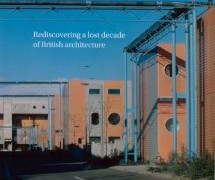This website uses cookies
This website uses cookies to enable it to function properly and to analyse how the website is used. Please click 'Close' to accept and continue using the website.



The Seventies is a very difficult period to summarise, but the C20 Society’s new journal has been published to warm acclaim for achieving just that. Describing it as ‘essential reading for anyone who wants to understand that decade’, Bridget Cherry particularly praised the extended introductory essay by editors Elain Harwood and Alan Powers as ‘a brilliant gathering together and explanation of so many confusing issues and buildings’.
Elain Harwood says that she hadn’t realised until starting work on the journal just how similar the issues of the 1970s were to those of the 2010s, with the birth of the green movement, and also in thinking about live-work environments, the economy, and the variety of styles and materials available for building. She also noted how many of the practitioners just beginning to come to prominence then are still big names now.
Powers thinks that they have ‘achieved a range of coverage that is unlike any other, with a strong focus on actual buildings, supported by eye-witness accounts’. There are essays describing new theatres, art galleries, mosques and offices, and contributions telling personal stories of the decade, from the cartoonist Louis Hellman, the architect David Rock and the historian Gavin Stamp. The period saw the first designs by some of Britain’s leading practitioners, including Sir Terry Farrell and Sir Jeremy Dixon, whose colourful early projects are described by Kenneth Powell. The sophisticated revival of 1920s and 30s White Modernism is analysed by Geraint Franklin, and Roland Jeffery shows how many architectural roads crossed in Milton Keynes. Elizabeth Nathaniels has described the book as ‘ a triumphant example of the best of present architectural history, seen as being more about ideas and movements than actual buildings’.
The journal has recently been sent to C20 members, but you can also buy it online from the C20 Society on Amazon.

Become a C20 member today and help save our modern design heritage.